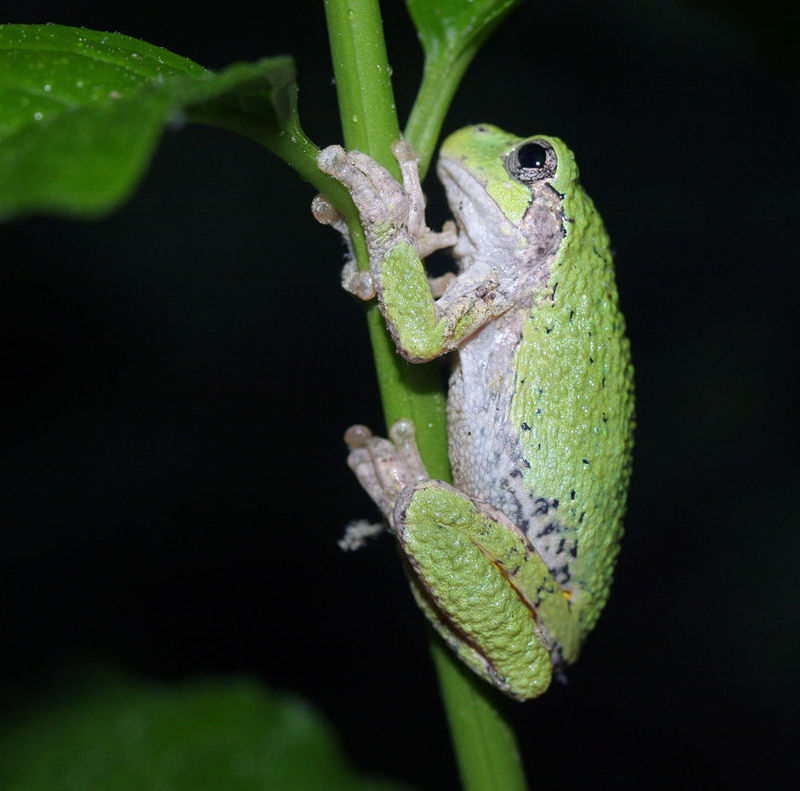Gianni rescues a gray tree frog (Hyla versicolor)
In the winter, I found a gray tree frog hopping around our gym here in Maryland. I guess he was drawn inside by the heat? Well I took him home and had him in a fish tank with water, crickets and artificial leaves for shelter. I got a heating pad that was stuck to the back of the tank. I was wondering how cold I could keep my home and have the frog still be ok?
Wikipedia says: “The gray tree frog is capable of surviving freezing of their internal body fluids to temperatures as low as -8 °C.”
So, if the frog is indoors and there’s a heating pad on the tank, he should be all right.
In the spring it was warming up so it seemed like the frog was getting more active. He had no idea they could climb smooth glass.
Gianni writes in to ask when is the right time and how far away from where he found the frog should he release it?
Should I release him where I found him? I found him about 10 miles from home.
At what point is it safe to release him? I am in northern Maryland.
Frogs Are Green advises: So long as it’s not too cold at night, it should be fine. He waited till Saturday and released the frog on “Save the Frogs Day!”

Gianni added some foliage (shade) for the gray tree frog until he decides what to do. The grass pictured behind the tree had some standing water as well.
He also put some crickets near him to give him a boost!
UPDATE!
Gianni went back to the spot where he released the gray tree frog and saw dozens of tiny frogs hopping all over the grass! They were small enough to sit on an eraser head comfortably!
About the *Gray Tree Frog:
The gray tree frog is a small arboreal frog native to much of the USA and southeastern Canada. They are variable in color due to the ability to camouflage themselves, from gray to green. The female does not call and has white in the throat area; the male calls and throat color changes (black/gray/brown) during the breeding season. The female is usually larger than the male.
Gray tree frogs are typically no larger than 1.5 to 2 inches. They have a lumpy texture to their skin and almost indistinguishable from the Cope’s gray tree frog.
These frogs hardly descend from tree branches except during breeding season, so it’s unusual for Gianni to have found this one in a gymnasium!
*Information source: https://en.wikipedia.org/wiki/Gray_tree_frog




